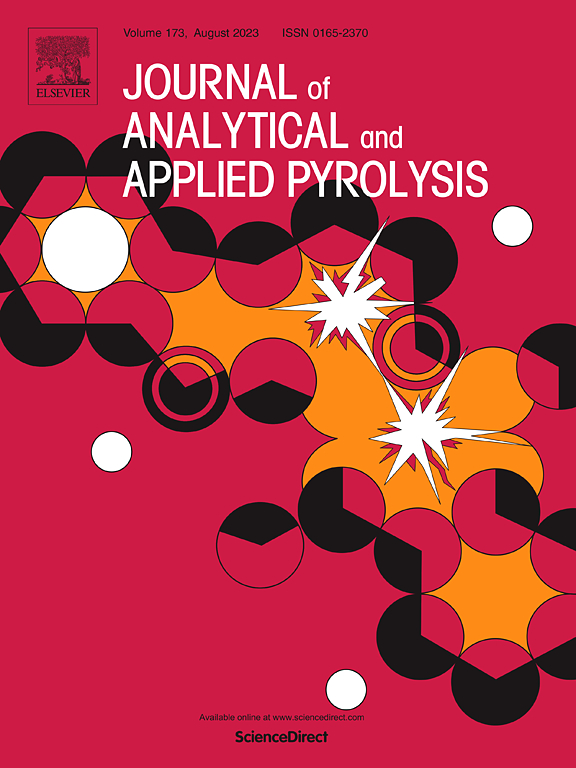Dry distillation of pyrolyzed bio-oils: Exploring the evolution mechanism of heat polymerization in algae-derived bio-oils
IF 5.8
2区 化学
Q1 CHEMISTRY, ANALYTICAL
引用次数: 0
Abstract
This study systematically elucidates the thermal polymerization mechanism of dry distillation residues from algal bio-oil, with a focus on the transformation pathways of functional groups. The thermal polymerization process involves two main stages. First, low-boiling small molecules undergo crosslinking polycondensation to form polyaromatic frameworks, while non-aromatic moieties undergo cyclic polycondensation to enhance the aromaticity of residues. Subsequently, deoxygenation reactions occur, particularly dehydration/demethoxylation of aromatic structures, and furanyl compounds accelerate polymerization by thermally activated ring-opening to generate carbonyl intermediates. For nitrogen-containing species (pyridine, pyrrole, indole, nitriles), heat treatment promotes chain cleavage of long-chain nitriles into short-chain analogs, accompanied by cyclization-aromatization cascade reactions to form pyridine derivatives and methyl-indoles. Critically, thermal polymerization enables nitrogen heterocycles to graft nitrile/alkyl side chains, forming uniquely structured polymeric frameworks. Multi-scale analysis methods reveal that algal bio-oil coordinates synergistic chemical pathways of aromatic condensation, deoxygenation, and nitrogen reorganization under temperature to form residues. These findings highlight the thermal polymerization characteristics of algal bio-oil, providing a theoretical basis for optimizing dry distillation separation of algal bio-oil and subsequent utilization of residues.
生物油热解的干馏:探讨藻类生物油热聚合的演化机制
本研究系统地阐述了藻类生物油干馏残渣的热聚合机理,重点研究了其官能团的转化途径。热聚合过程包括两个主要阶段。首先,低沸点小分子通过交联缩聚形成多芳框架,非芳部分通过循环缩聚增强残基的芳香性。随后,发生脱氧反应,特别是芳香结构的脱水/去甲氧基化,呋喃基化合物通过热激活开环加速聚合,生成羰基中间体。对于含氮物质(吡啶、吡咯、吲哚、腈),热处理促进长链腈裂解成短链类似物,并伴随环化-芳构化级联反应生成吡啶衍生物和甲基吲哚。关键是,热聚合使氮杂环能够接枝腈/烷基侧链,形成独特结构的聚合物框架。多尺度分析表明,藻生物油在温度下协调芳烃缩合、脱氧、氮重组等协同化学途径形成残基。这些研究结果突出了藻类生物油的热聚合特性,为优化藻类生物油的干馏分离及后续残留物的利用提供了理论依据。
本文章由计算机程序翻译,如有差异,请以英文原文为准。
求助全文
约1分钟内获得全文
求助全文
来源期刊
CiteScore
9.10
自引率
11.70%
发文量
340
审稿时长
44 days
期刊介绍:
The Journal of Analytical and Applied Pyrolysis (JAAP) is devoted to the publication of papers dealing with innovative applications of pyrolysis processes, the characterization of products related to pyrolysis reactions, and investigations of reaction mechanism. To be considered by JAAP, a manuscript should present significant progress in these topics. The novelty must be satisfactorily argued in the cover letter. A manuscript with a cover letter to the editor not addressing the novelty is likely to be rejected without review.

 求助内容:
求助内容: 应助结果提醒方式:
应助结果提醒方式:


